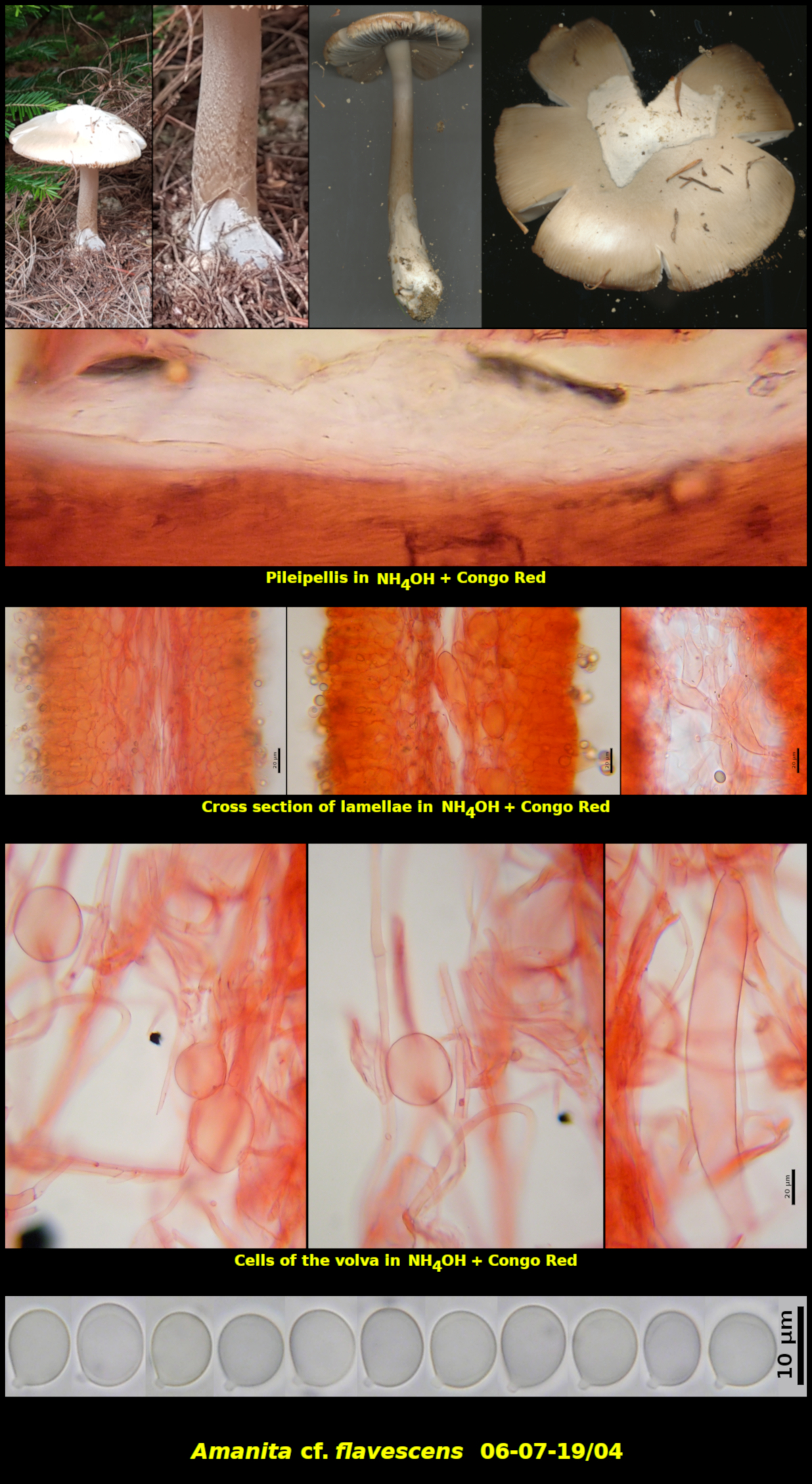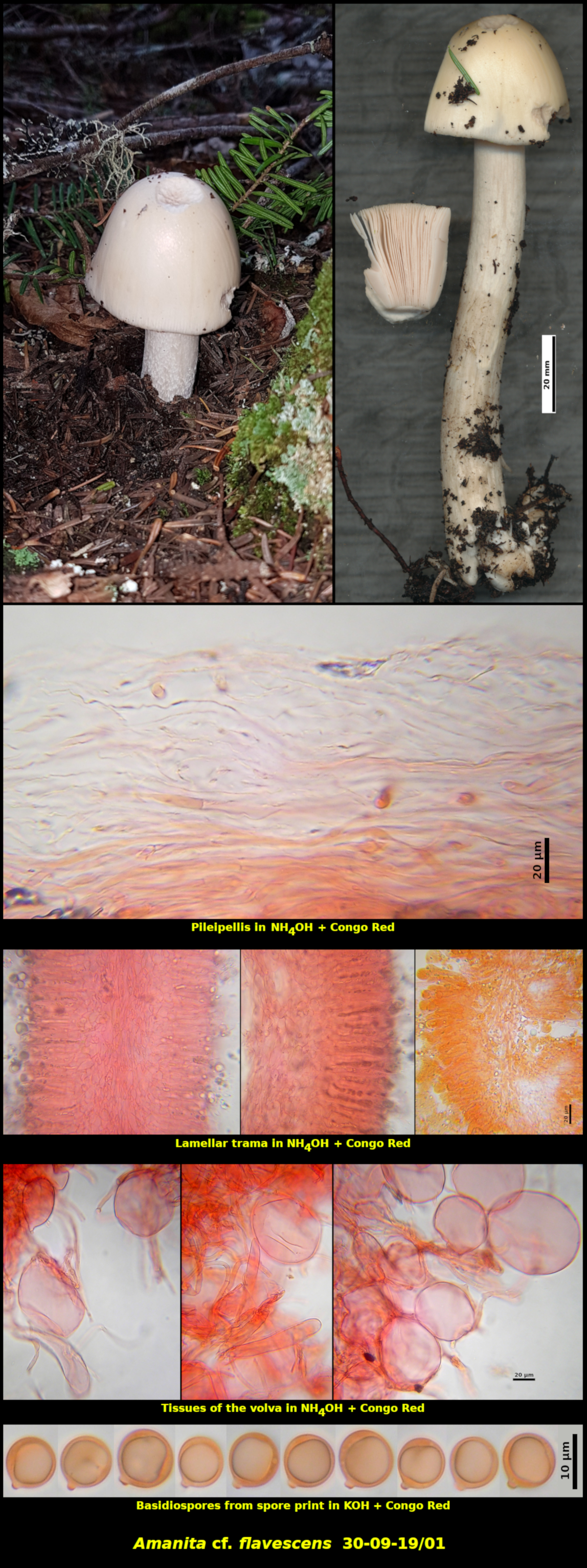Fleshy Fungi of New Brunswick >>
Amanita cf. flavescens
Amanita cf. flavescens (E.-J. Gilbert & S. Lundell) Contu


Two collections:
1. Solitary in in soil at the base of Abies balsamea – 1.5 km west of Little Lepreau, New Brunswick (30-09-18/01).
Basidiospores white in spore print, subspherical to spherical, smooth, inamyloid, 9.1-10.7 x 8.3-10.1 µm, Q = 1.00-1.14 (average[34]: 9.8 x 9.3 µm, Q = 1.05. Basidia 4-spored. Pileipellis a rather thick ixocutis, without a well-differentiated subcutis. Lamellar trama bilateral-divergent, with central strand compact and mostly parallel, with divergent part composed of mostly narrow and partially interwoven hyphae. Volval tissues of interwoven hyphae, containing numerous spherical to clavate swollen cells.
2. Solitary at the side of a woods road, in forest dominated by Picea rubens, Pinus strobus, Abies balsamea and Betula papyrifera, Kennedy Lakes Protected Natural Area, New Brunswick (06-07-19/04).
- Basidiospores white in spore print, nearly spherical to broadly ellipsoidal, smooth, not amyloid, 8.9-10.8 X 7.0-9.8 μm, Q = 1.06-1.42 (average[27]: 9.8 X 8.2 μm, Q = 1.20). Lamellar trama in longitudinal section consisting of a central strand of hyphae giving rise to swollen clavate divergent cells, with divergent cells running approximately parallel to the faces of the lamellae and thus not conspicuous in longitudinal section, with a pseudoparenchymatous subhymenium. Pileipellis a thick ixocutis above a compact subpellis of parallel hyphae. Volva mostly of filamentous hyphae but giving rise to some spherical to cylindrical swollen cells. Basidia 4-spored.
Amanita flavescens was originally described from Norway and Sweden and is only rarely reported in North America. Tulloss discusses and illustrates this species in some detail on his Amanitaceae website . It is characterized by its yellow buff pileus, ringless stipe and white volva. Microscopically it is recognized by its often spherical basidiospores. Tulloss reported a collection from Newfoundland that was very similar to the European material, which suggests that it might have a northern distribution on both continents.
There is ample reason to believe that neither of the collections presented here are actually correctly identified as A. flavescens nor, in fact, whether they even belong to the same species. They are included under that name only for convenience and because in common with A. flavescens they have a pale yellowish pileus, lack an annulus, have a white volva, have nearly spherical basidiospores and occur with conifers. They differ from one another in having slightly differently-shaped basidiospores and in having quite different lamellae when viewed in cross section. That last characteristic, although requiring some patience to determine, involves the presence or absence of broad club- to sausage-shaped cells in the divergent part of the lamellar trama, clearly lacking in Collection 30-09-18/01).
Photograph: D. Malloch (30-09-18/01, 06-07-19/04).